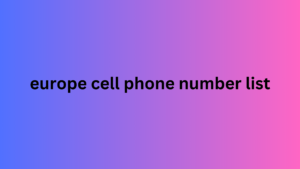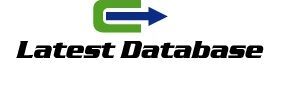Anchor text is a crucial element in search engine optimization (SEO), helping search engines understand the content of a linked page. It’s an essential tool when targeting both informational and transactional long-tail keywords. In this article, we’ll explore how to strategically use anchor text to boost your rankings for these types of keywords.
1. Understanding Anchor Text and Long-Tail Keywords
Anchor text is the clickable text in a hyperlink, often highlighted in blue and underlined. It can be a powerful tool in guiding both users and search engines to the relevant content.
Long-tail keywords are longer europe cell phone number list, more specific phrases that typically consist of three or more words. They can be categorized into two types:
- Informational Long-Tail Keywords: These are search queries where users are seeking information. For example, “how to fix a leaking faucet” or “best ways to study for exams.”
- Transactional Long-Tail Keywords: These queries are made by users looking to take an action, such as purchasing a product. Examples include “buy Nike shoes online” or “order a birthday cake near me.”
2. Using Anchor Text for Informational Keywords
When targeting informational long-tail keywords, your anchor text should reflect the query’s intent. These keywords often have a “how,” “what,” or “why” in the phrase how to incorporate anchor text for long-tail keyword ranking, indicating that the user is looking for answers or tutorials. Here’s how to use anchor text for these keywords effectively:
- Descriptive Anchor Text: Use clear, descriptive anchor text that outlines the value of the content the user will land on. For example, if you’re linking to a blog post titled “How to Bake a Cake,” an anchor text like “baking a cake for beginners” or “learn how to bake a cake” will match the informational intent.
- Contextual Relevance: Ensure that your anchor text is contextually relevant to the content. The anchor text should naturally flow within the sentence, providing a logical connection to the page being linked.
- Linking to Relevant Content: For informational keywords, linking to blog posts, guides, FAQs, or tutorials is ideal. This provides users with the exact information they’re looking for, improving the chances of ranking for these keywords.
3. Using Anchor Text for Transactional Keywords
Transactional long-tail keywords are often associated with high commercial intent. These users are looking to make a purchase or take some other form of action. Here’s how to use anchor text effectively for transactional keywords:
- Include Action Words: Use action-oriented language in your anchor text. Phrases like “buy now,” “shop for,” “order today,” or “get started” appeal to transactional searchers. For example, “buy eco-friendly sneakers” could be the anchor text leading to an e-commerce product page.
- Maintain Relevance to the Page: Ensure that the anchor text is directly related to the product or service on the linked page. If you’re linking to a specific product, the anchor text should include the product name or category, such as “buy organic skincare products” or “shop top-rated laptops.”
- Use for Product Pages or Landing Pages: Transactional keywords work best when linked to product pages, service pages, or special offers. These pages should be optimized to convert visitors into customers, ensuring that the anchor text leads to a page designed for action.
4. Best Practices for Anchor Text Usage
To maximize the impact of anchor text for both informational and transactional long-tail keywords, follow these best practices:
- Avoid Over-Optimization: While it’s important to include keywords in your anchor text, avoid overusing exact-match keywords. This can look spammy to search engines. Mix up your anchor text with variations and natural phrases.
- Use Internal Linking: Linking to your own content using anchor text can help distribute link equity across your website. For informational keywords phone number es, internal links to blog posts or resource pages can help users discover additional valuable content.
- Focus on User Experience: Above all, ensure that your anchor text adds value to the user experience. The link should enhance the content by providing easy access to relevant information or products.







